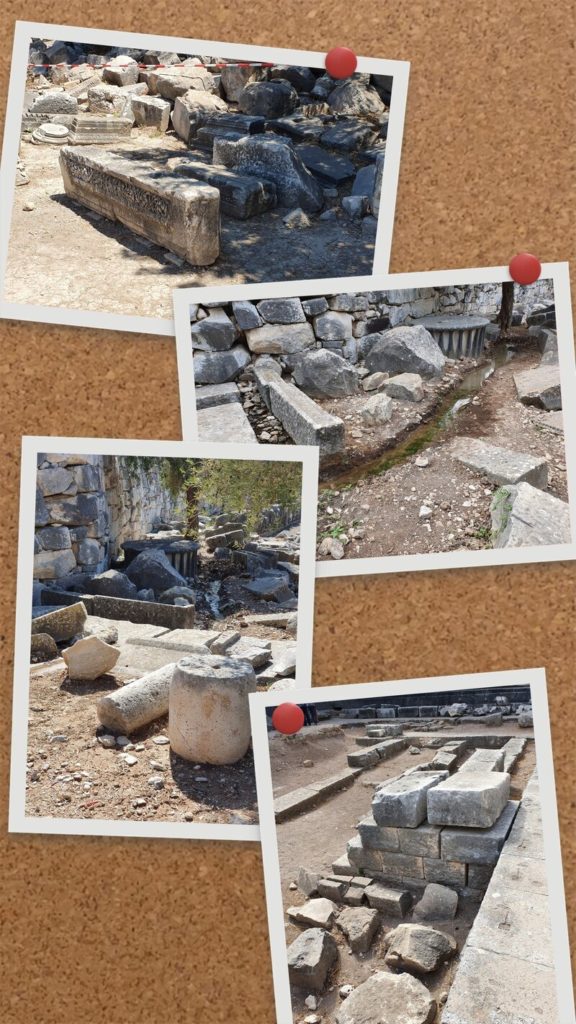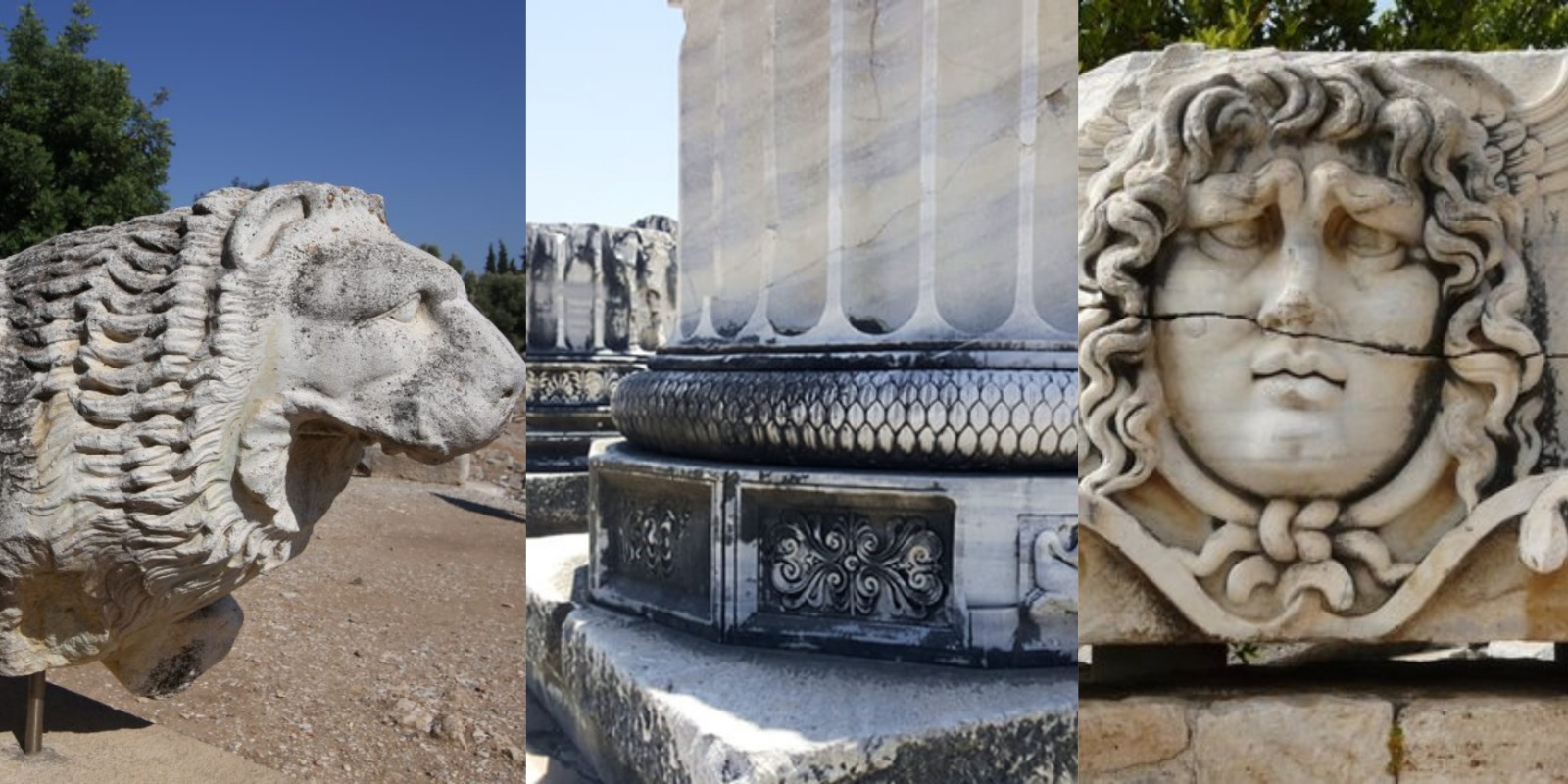By Glenn Maffia
I have often pondered upon the thought that the establishment of a visitor centre and museum, displaying artefacts recovered from the Temple of Apollo, and the adjacent area, would be a significant complement to the magnificent landmark(s) of ancient Didyma.
As of now, the antiquities from the Didyma environment have been dispersed far and wide, though some remain at the nearby Miletus Museum.
A hurdle to negotiate
It is my belief that a public visitor centre/museum would lend a semblance of appreciation and understanding to the entire site. While on a recent visit I noticed that we continue to be bereft of even a meagre guidebook of any description.
I can only conclude that visitors are walking around ‘blind’ to the subtle nuances of the temple, thus missing the finer points of its extraordinary design. Whereas the knowledge that the incumbent temple is the third such temple dedicated to Apollo to be erected upon the site is probably unbeknown to many. If one were to garner and absorb this information so much more magic would be imbued, thus encouraging more visitors to the site.
We could comfortably settle for a Visitors Centre with photos, or architectural copies, from the deposits in Miletus. The visual aids in recounting this history of the site could simply be served by a video presentation relating the dramatic past. That technology is in plentiful supply today, it could be achieved at minimal cost.
Certain vital and fundamental points of history are, at this time, no longer being recounted to curious visitors.

From top to bottom:
1.Theatre frieze (now placed in the Temple precinct).
2. South boundary wall where flooding occurred.
3. South wall displaying smaller architectural structure.
4. The Naos, where the Cult Statue of Apollo was housed.
Paramount to inspire imaginations
The immediate and surrounding land has been, quite correctly, defined as a Protected Area while the land abutting this zone is inexorably filling with yet more bland and unimaginative concrete apartment blocks.
We do have however a particularly underused car park to the west of the Temple. This area was excavated in 1969 and 1972 but revealed little of interest.
To my eye this would be a suitable location for the Visitor Centre, and what little archaeology that was found beneath the neglected car park could be left exposed to capture imaginations.
Certainly, there continues to be a probable likelihood that more artefacts are to be found beneath our feet, possibly some astounding finds. The archaeology is far from complete.
The location of placement for any prospective museum would naturally depend on if there are any current landowners in situ. Though even if that be the case, a compulsory purchase order could be issued to benefit of raising the profile of the town.
In comparison to the museums/visitor centres springing up around the Tepe (Hill) archaeological sites, we have been dragging our feet here in Didyma.
Out there in the far east of Türkiye they have all the infrastructure in place around the two most prominent sites. The sites themselves are the museums, while excellent copies of the artefacts are housed within modern visitor centres with video presentations and a refreshment area.
Modern Didim has done little or nothing to facilitate any interest upon the archaeological site. Predictably, the local Belediye (Council) have focused upon rather jejune pursuits, such as festivals around the Temple, where one cannot even see the magnificent structure as it is completely hidden by all the market stalls hanging upon the enclosure walls. Great for euphoric revellers, though less stimulating if one is seeking high culture.
I can recognise the local perception, but our guests are not all devoid of interest and curiosity. Many possess cognitive faculties, worthy of respect and appreciation, and have wallets that are not flustered over the price of a ‘tourist-inflated’ beer.
Decisions for the Ministry
Didim, being fortunate enough to inherit an astounding ancient Temple of great importance, does precious little in attending to the cultural gravity of this structure save for further cluttering the site with cafés, bars and souvenir establishments.
Even local tour agencies shy away from taking visitors to the Temple for there is not enough money in such an ‘on-the-doorstep’ tour for them. They prefer the long-haul overnight stay tours to Pamukkale, Cappadocia etc.
I realise the Belediye cannot physically touch or make decisions upon the Protected Zone. That is the domain of the Ministry of Culture and Tourism.
Though even here within the Provincial Aydın branch of the Ministry efforts continue unabated to focus upon reconstructions, which to me scar the landscape of imagination. They may have learnt all the technical aspects of the subject, but they appear to be devoid of a ‘feeling’ for a site.
Though if I am to believe the figures regarding tourism numbers then 600,000 visitors arrive in Didim during the height of summer. While of that number 130,000 visited the Temple of Apollo. That is hovering around 20%. One-fifth have shown interest, which is a significant number, but they are offered so very little in return.
Certainly no background information from any academic source is offered or on display, save for a few excellent information boards erected by the German archaeologists. Some of which have never been seen as they line along the closed Sacred Road. Why is this integral section of ancient Didyma prohibited to the visiting public???
Therefore, a museum coupled with a visitor’s centre, well researched and executed, would be an invaluable additional contribution to this town. It would elevate Didim beyond the derogatory ‘Tinky Town’ sobriquet.
